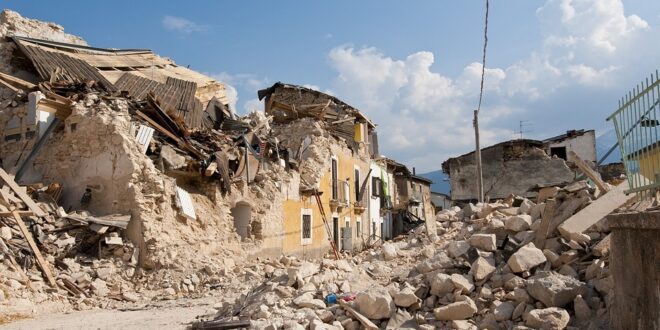Earthquakes Explained: The Science Behind The Rumbles
Introduction
Earthquakes have been a topic of fascination and curiosity throughout human existence. These natural phenomena, though often accompanied by destruction, remind us of the powerful geological forces that shape our planet. So, have you ever wondered how and why earthquakes occur? Let’s dive into the science behind the rumbling tremors that can be felt thousands of miles away!
Tectonic Plates and Movement
Beneath the Earth’s surface lies a complex puzzle of enormous slabs known as tectonic plates. These plates slowly glide and interact with each other, driven by the intense heat of the Earth’s core. Sometimes, these plates get locked together due to friction, and as the pressure builds up, sharp tectonic edges snap, causing a seismic release of energy – an earthquake!
The Vibrating Waves
Once an earthquake occurs, an incredible burst of energy is unleashed in the form of seismic waves. These waves carry vibrations through the Earth, creating the rumbling that we often perceive. Imagine these vibrations as ripples spreading out from a stone thrown into a calm lake, reaching far and wide with varying intensities depending on distance and geological conditions.
Faults: Earthquake Superheroes
If tectonic plates were the actors, faults would be their loyal sidekicks, like Robin to Batman. A fault is simply a fracture or a crack in the Earth’s crust where movement between plates occurs. During an earthquake, the built-up strain causes the rocks on either side of the fault to shift. This movement releases seismic energy, causing the ground to shake.
Richter Scale: The Earthquake DJ
As earthquakes continue to amaze us with their power, scientists use the Richter scale to quantify their magnitude. Named after Caltech seismologist Charles F. Richter, this logarithmic scale measures the amplitude of seismic waves at a particular distance from the epicenter. As the numbers increase on the Richter scale, the earthquake’s severity grows exponentially.
Shaking Earth and Rumbling Sounds
Earthquakes unleash forces that shake our planet, but they also bring along a cacophony of noise. While it might seem strange, these rumbling sounds occur due to a phenomenon called geological resonances. Just as sound waves resonate inside a musical instrument, seismic waves resonate within rock layers, creating audible vibrations. This is why earthquakes can sound like distant thunder.
Conclusion
Earthquakes, though at times destructive, are also a testament to the incredible energy within our planet. Understanding the science behind these rumbling tremors not only satisfies curiosity, but it also helps us take steps towards mitigating their impact. So, the next time the ground shakes beneath your feet, remember the magnificent geological dance happening deep within the Earth. From tectonic plates to resonating waves, these rumbles are mementos of the marvels that shape our extraordinary planet.
 Mind Uncharted Explore. Discover. Learn.
Mind Uncharted Explore. Discover. Learn.




